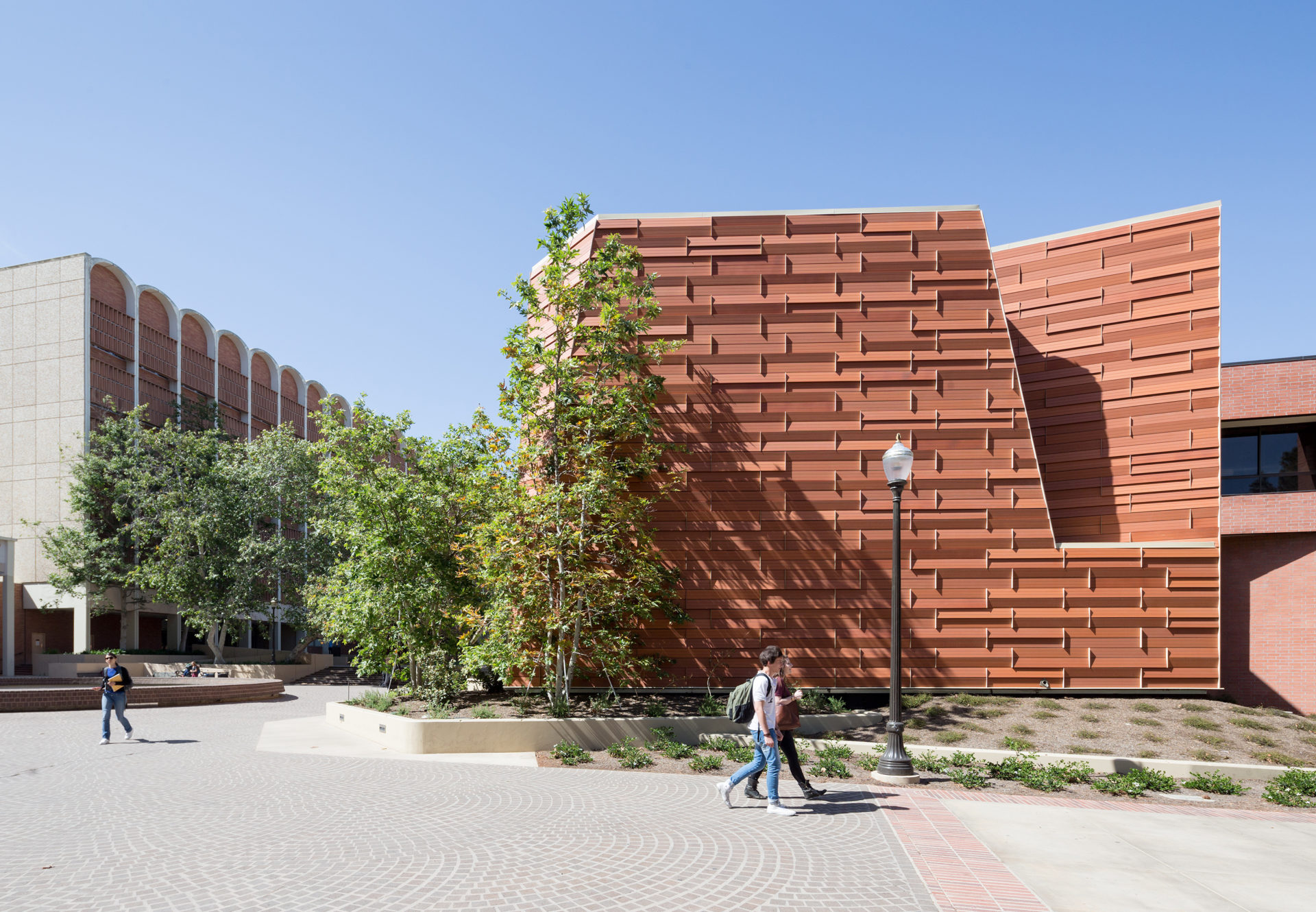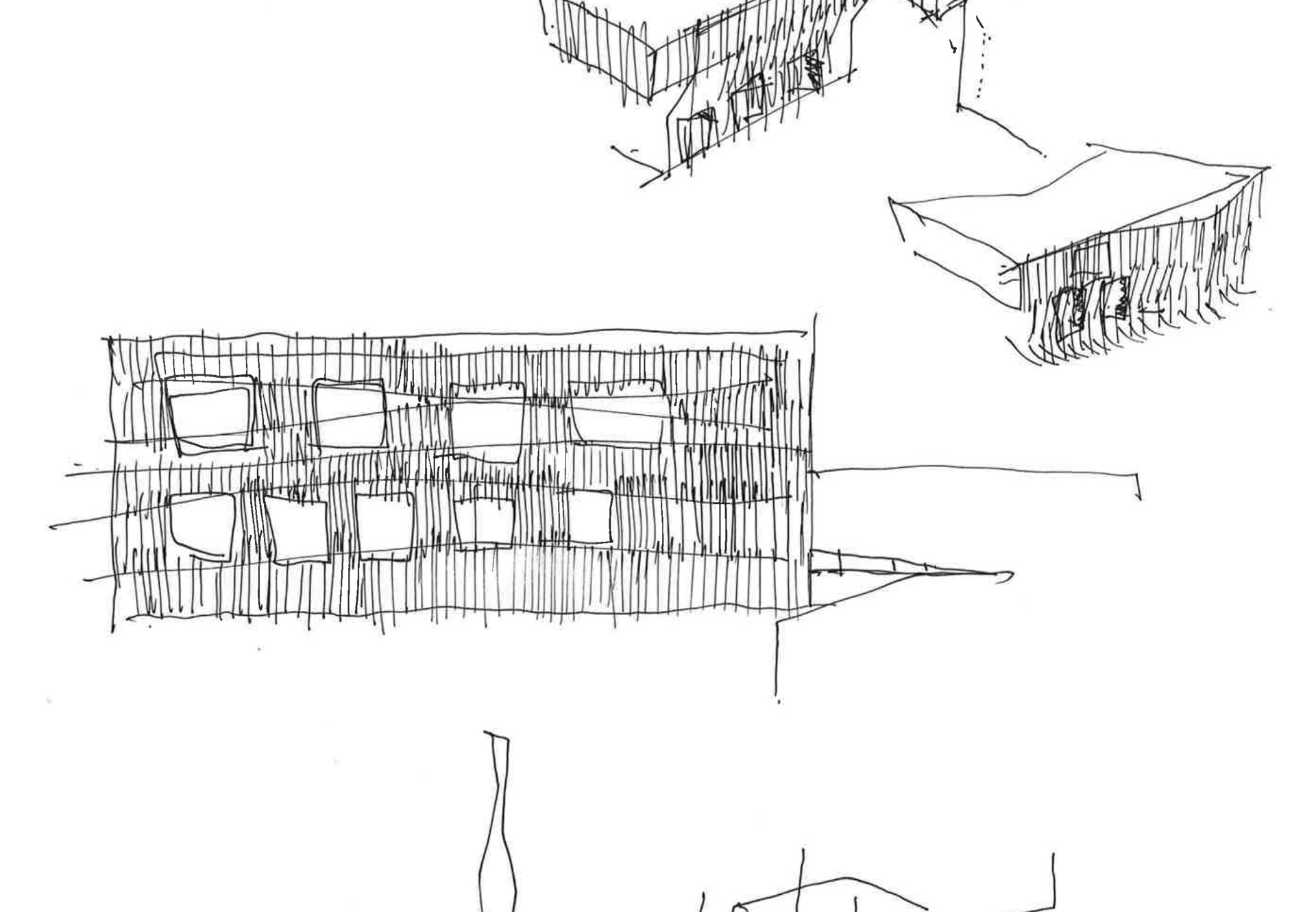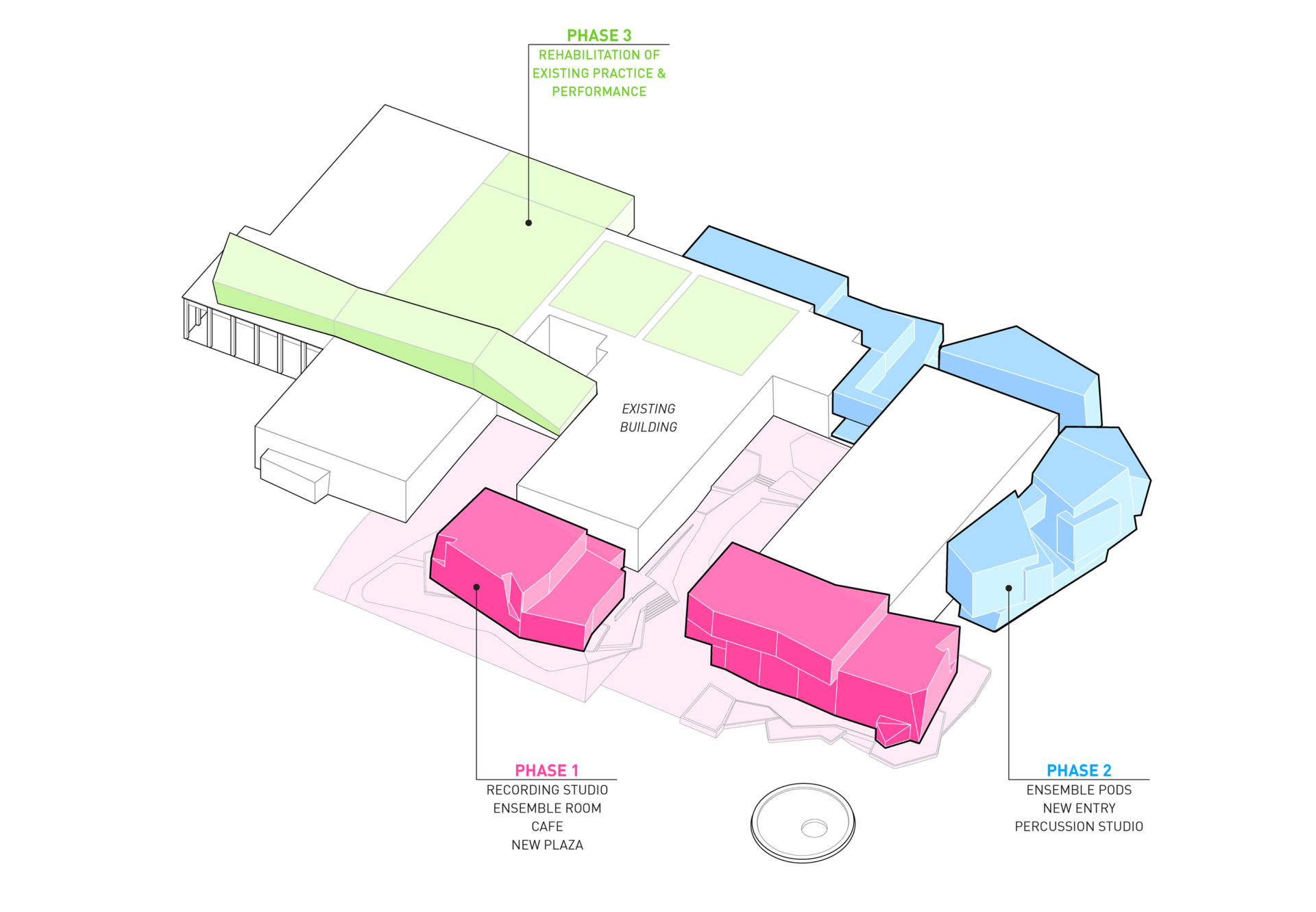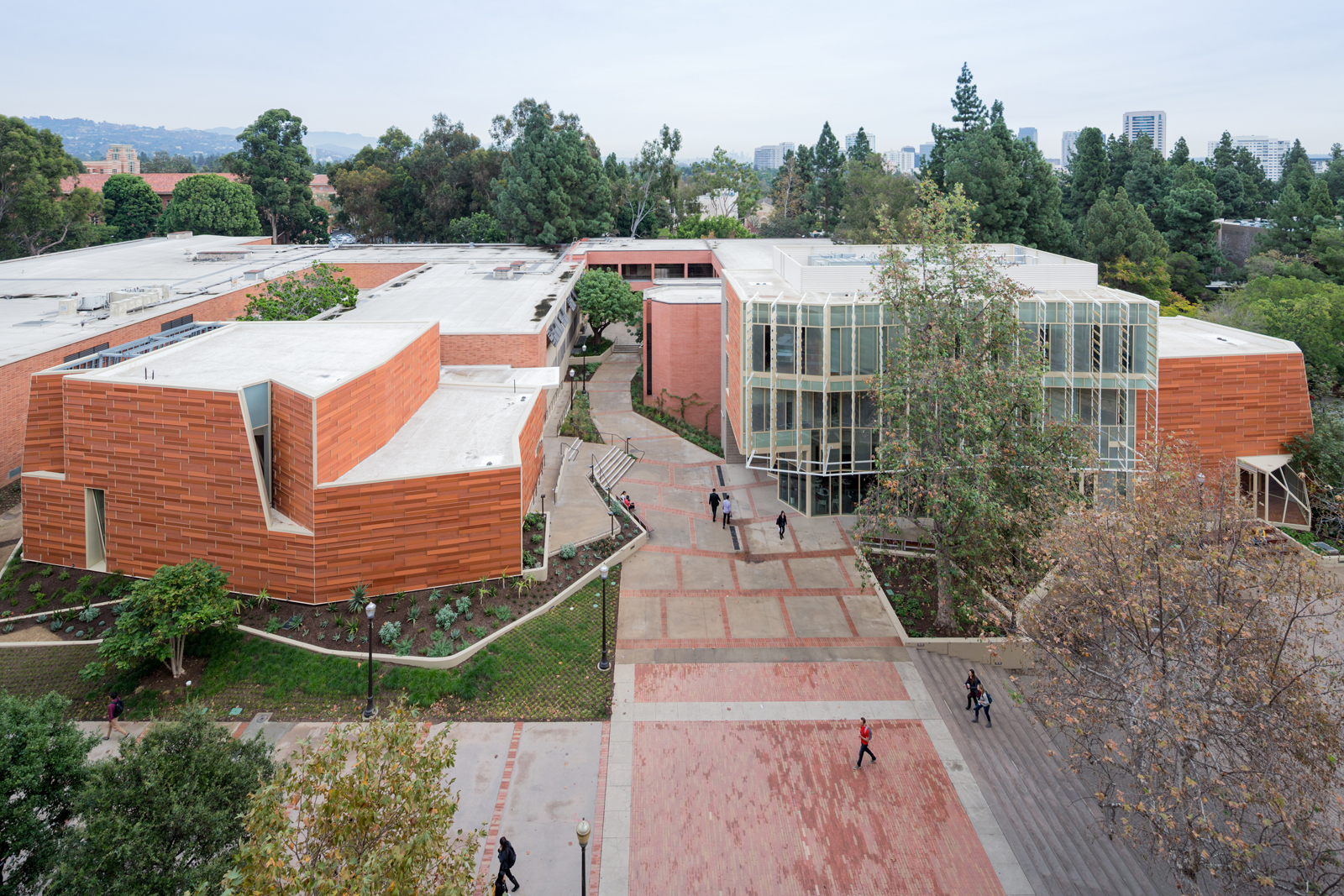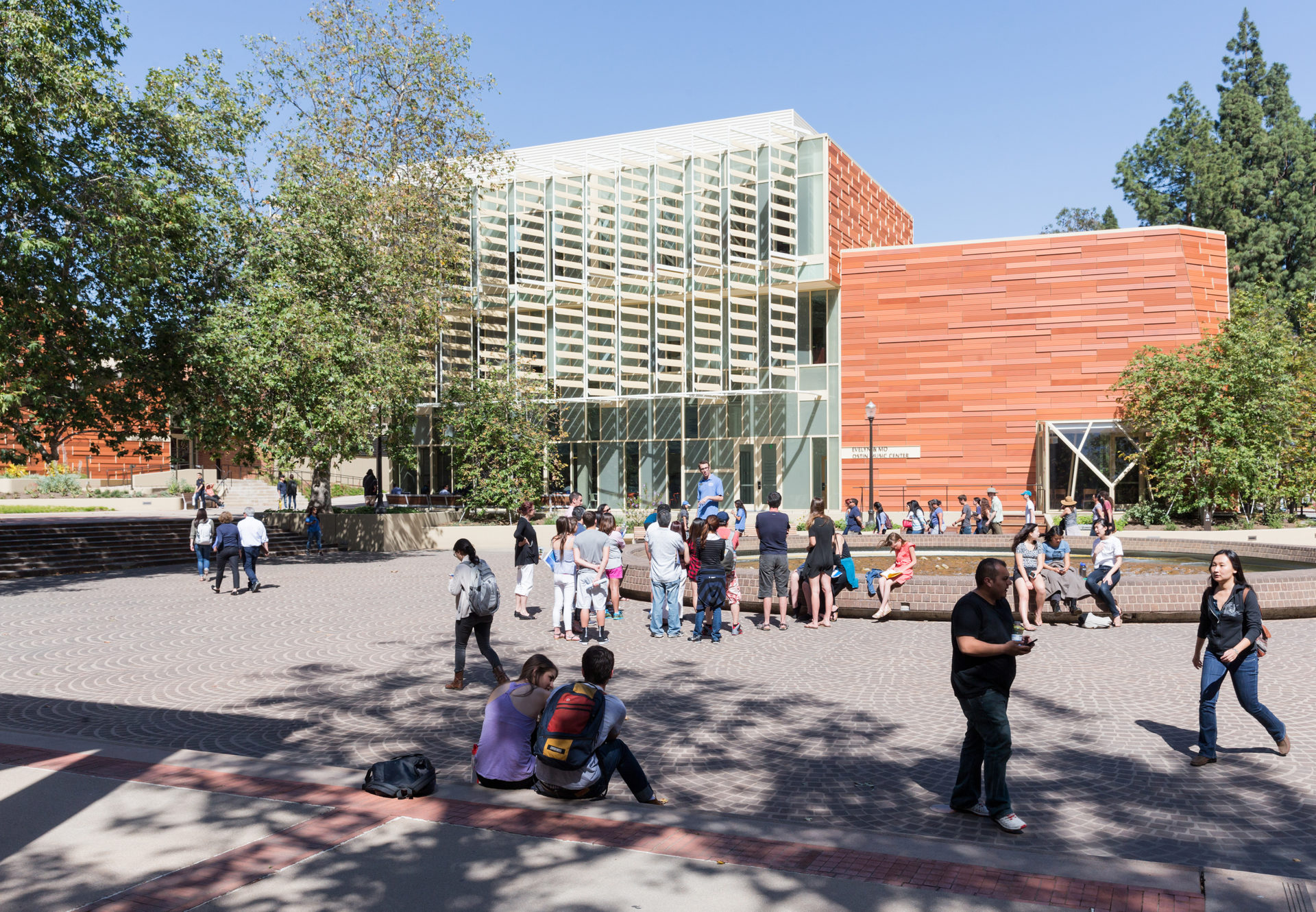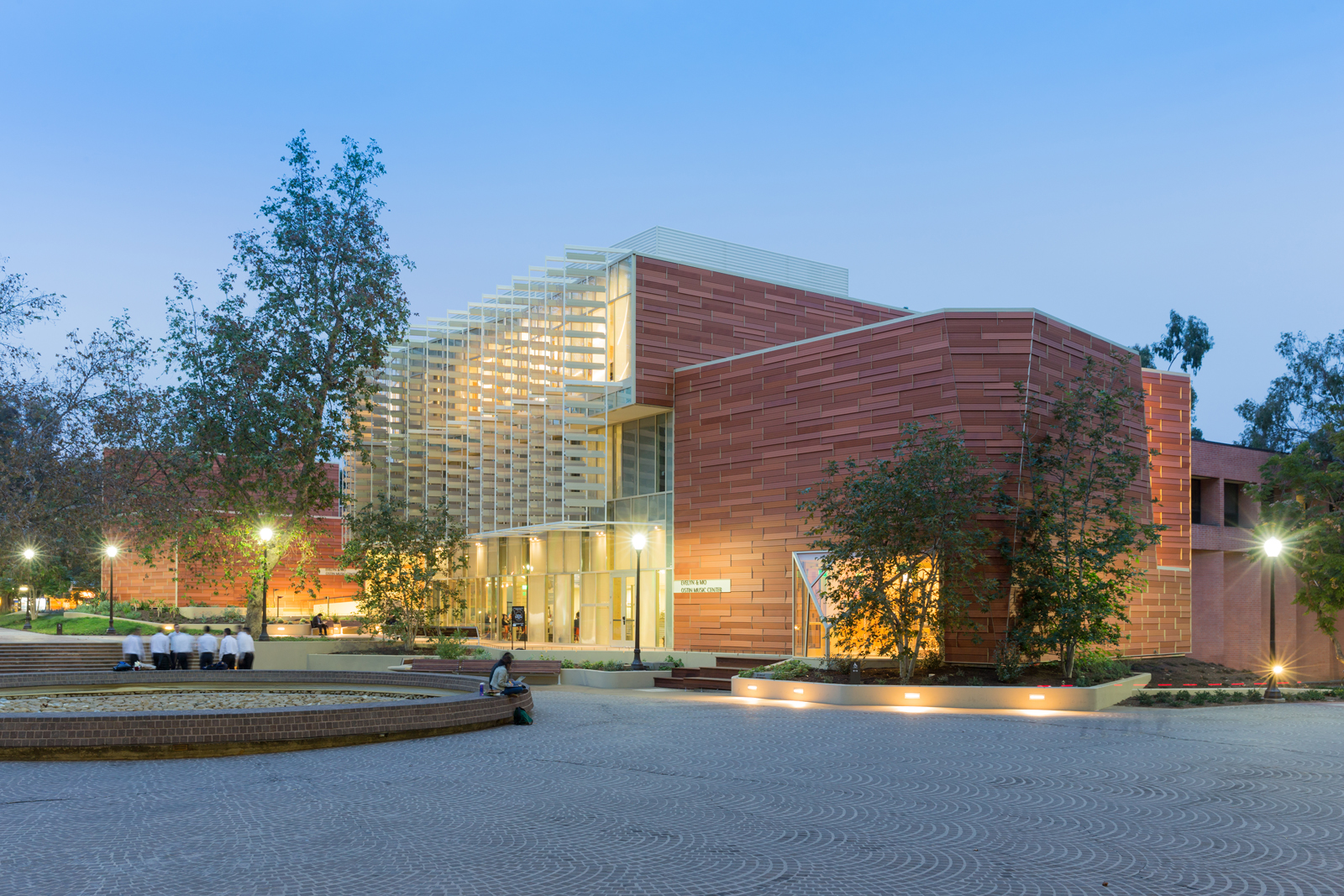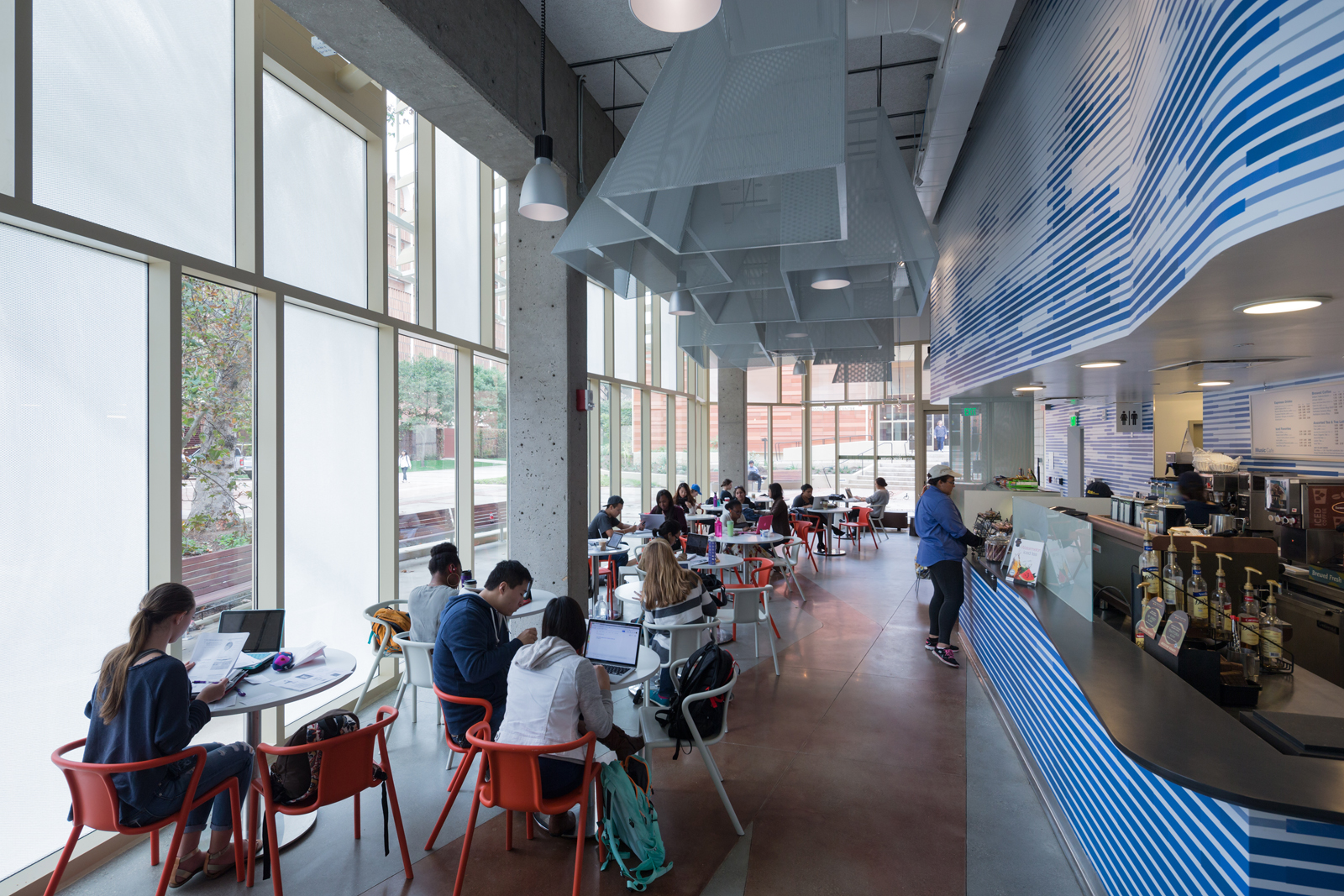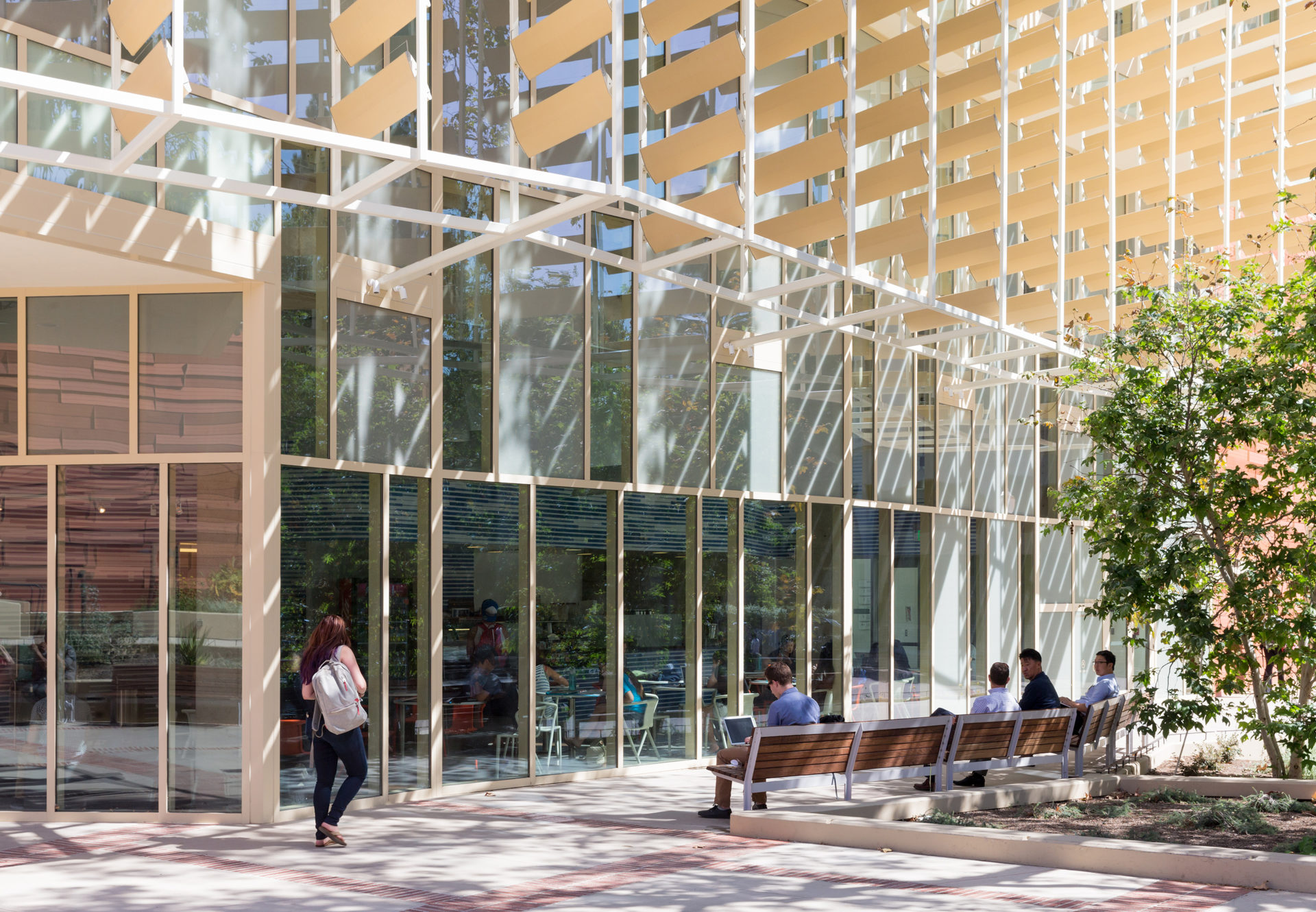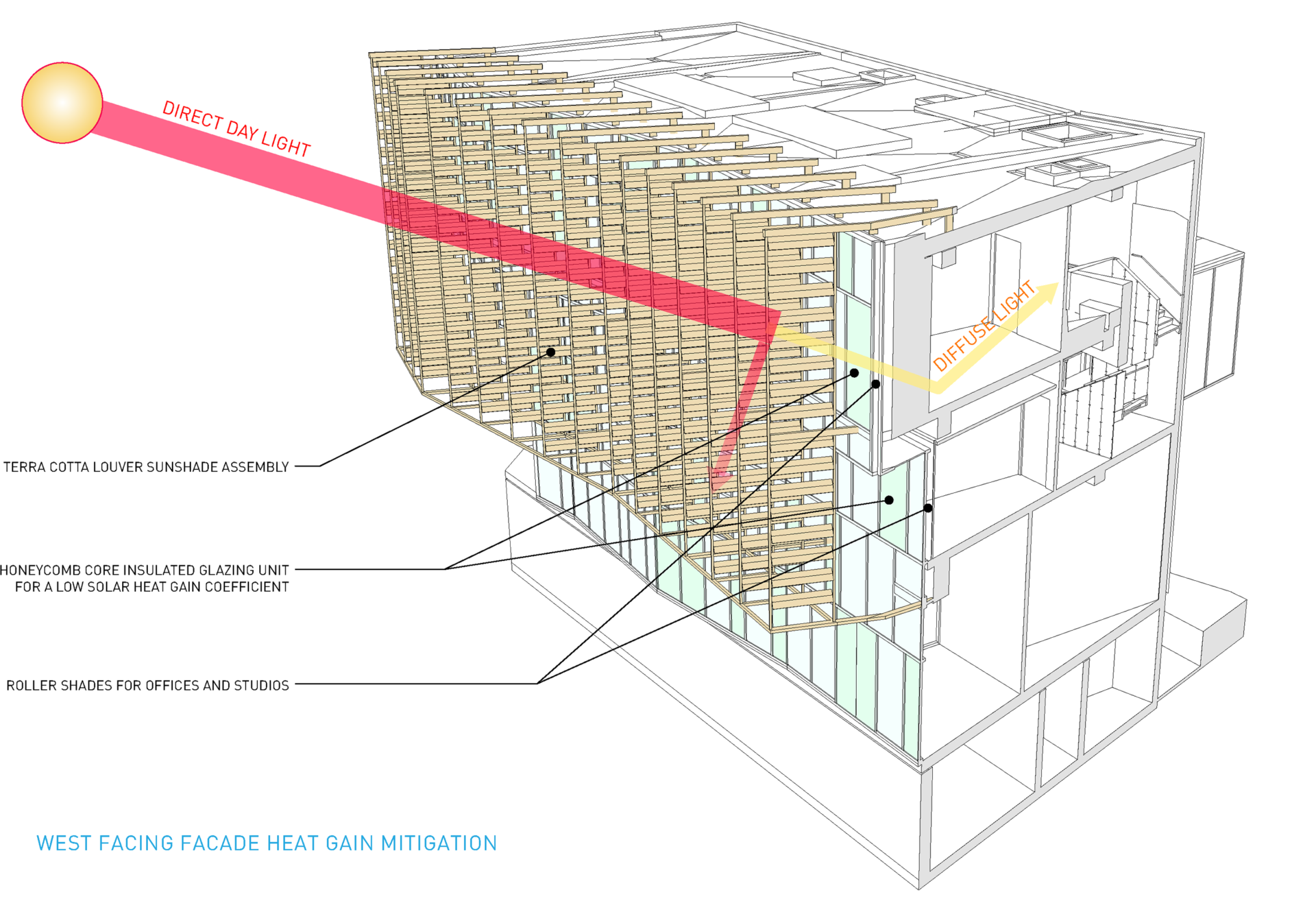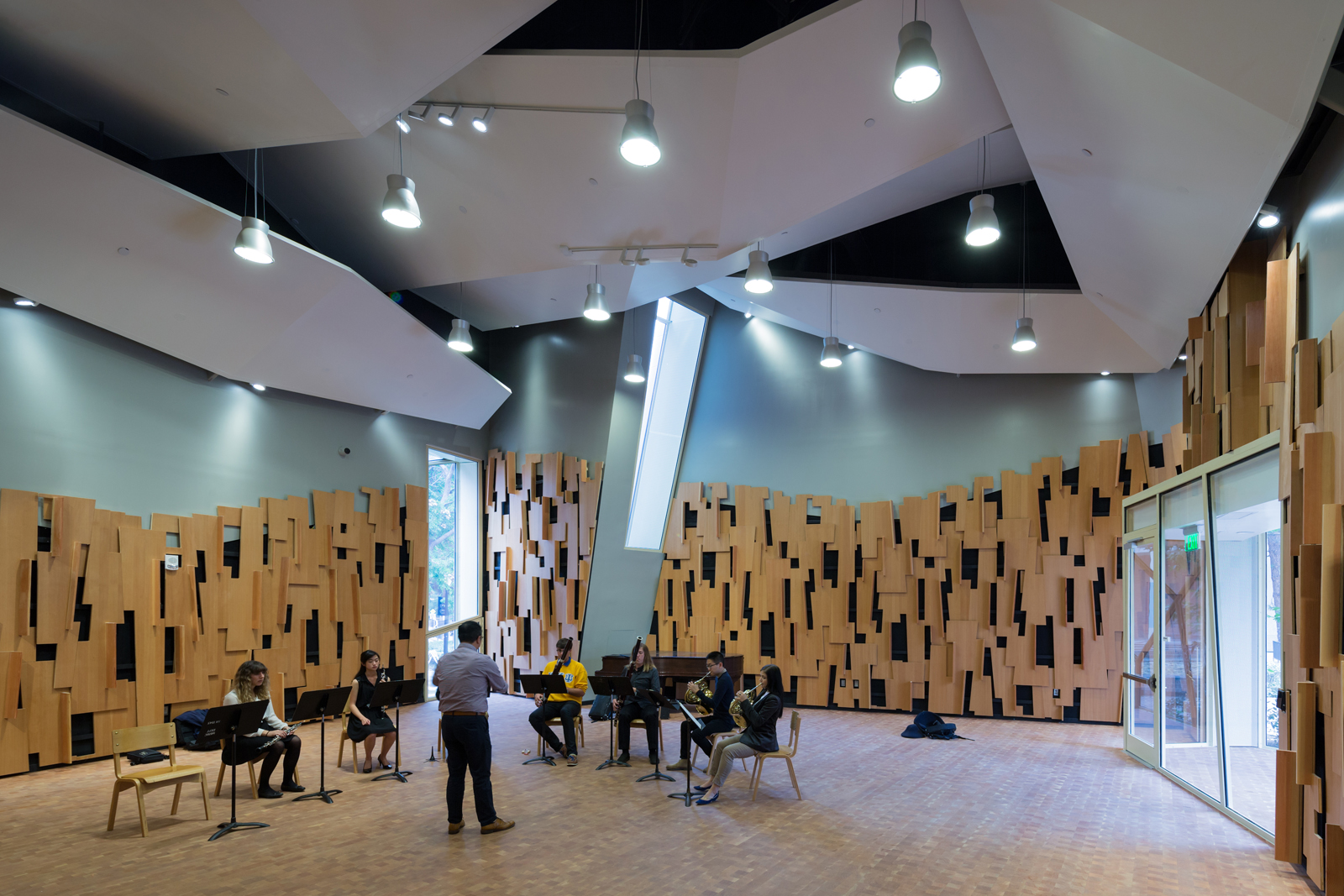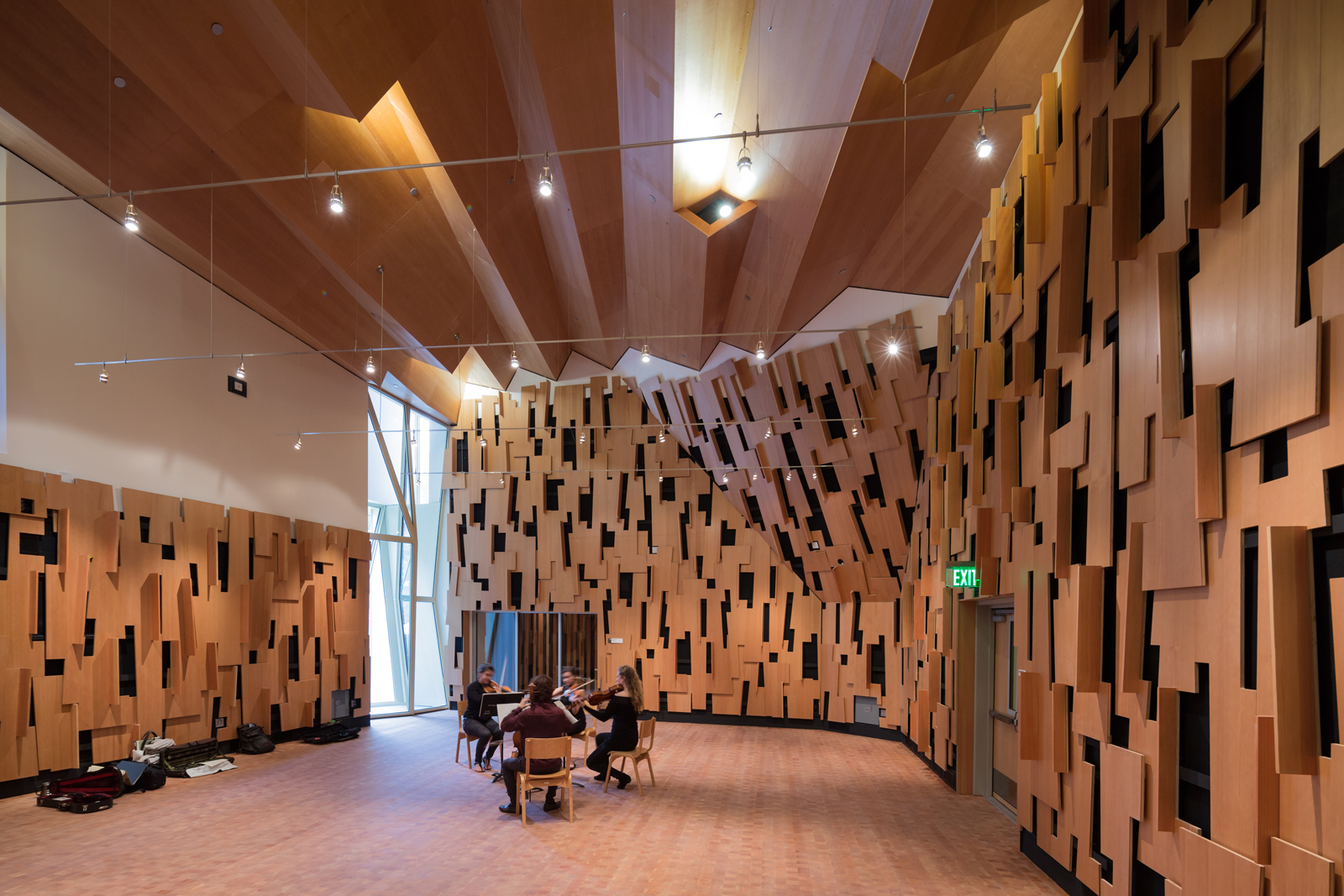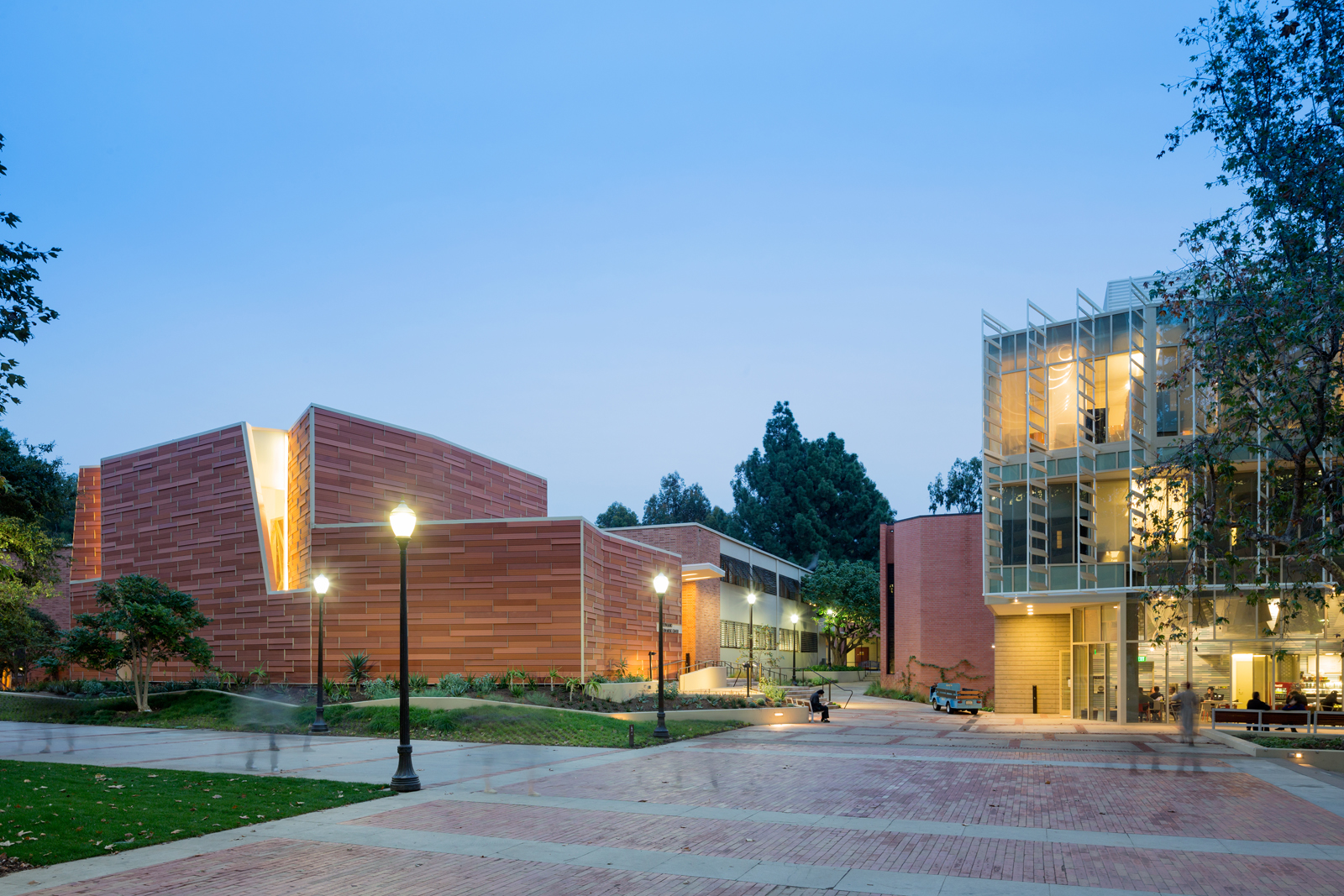- 2018 American Architecture Award
- 2017 AIALA Design Award
- 2015 Westside Urban Forum Award
- 2015 SCDF Design Award
UCLA Evelyn & Mo Ostin Music Center
- Location Los Angeles, CA
- Type Education
- Area 20,000SF
- Completion 2015
- Client UCLA
The new Evelyn and Mo Ostin Music Center at UCLA provides a pioneering new home for UCLA’s outstanding Music Departments, where music is created, shared, and studied in digitally integrated, professional-quality facilities.
kdA attached two pavilions, one a state-of-the-art recording studio and the other an ensemble performance room, to the existing Herb Alpert School of Music. The ensemble rehearsal space, with café at ground level and faculty offices and teaching studios above, faces the landmark Inverted Fountain. The second pavilion is a commercial quality recording studio featuring a live room large enough to record a film score with a full orchestra.
Site & Urban Context
Initially hired to develop a Design Procurement Program for the Music Building at UCLA, after evaluating the site and extensive meetings with department’s staff, kdA instead were asked to develop a master plan for the School of Music that allowed for phased growth as fundraising was achieved. kdA proposed a series of additions, subtractions, and modifications to the existing facilities that transformed the building into a dynamic complex that supports a new vision for music education at UCLA. The DPP allowed UCLA to plan the project in phases while the existing facility remained opened during the entirety of construction with minimal disruption.
Site planning for the Ostin Music Center, the first phase of the project, required reclaiming space on an intensively developed campus with a fixed perimeter. The program was split into two buildings to distribute the required facilities across the narrow site, as well as to enable the recording studio to be easily acoustically isolated as its own structure.
Complex coordination was necessitated below grade: pile foundations were required due to soil conditions and were carefully threaded around existing utility tunnels, and the pump room and vault had to be relocated for the historic Inverted Foundation to make way for the new structure.
The building system of the new center had to be tied into the existing building. Fire sprinklers, campus chilled water and steam, and electrical service had to be carefully threaded through the existing basement to the new building while maintaining current operations.
Program & Social Context
Historically, the UCLA Music program has been housed in facilities that are largely opaque even though the building is located at the crossing of two of the most heavily used pedestrian ways. This project presented the opportunity to simultaneously open the program visually to the campus and re-engage the surrounding public spaces with activity.
A strong visual connection between the Music practice facilities and the surrounding pedestrian routes connects the campus community to the diverse range of activities in the school, from opera to ethnic percussion groups. Social activators like shaded courtyards and a café draw student from many disciplines into closer proximity to the music program, and the new building is oriented toward the main campus to fully engage the campus at large.
A master plan was undertaken to identify a sequence, budget and program for the Music activities to “grow in place,” essentially building enough surge space to allow the program to move into newly constructed areas while existing areas are renovated. Master planning was closely associated to support phased fundraising efforts. kdA’s solution was to create very specific, achievable buildings goals that also supported an expanding program. Some of those elements are invisible, such as the integration of a digital hub network for all spaces in the complex. Others were visible including two dedicated, state-of-the-art performance rooms that allow the faculty and students to record, perform and broadcast to the campus and beyond.
Formal Architectural Strategy
The two pavilions that compose the center are the first phase of a master plan for the School of Music that will refocus the music facilities outward, promoting stronger visual and social connections to the campus by manifesting its activities to the UCLA campus community. The 4300SF recording studio is delicately attached to the Schoenberg Music Building, which was originally designed by Welton Beckett, and the three-story, 16,000SF ensemble and classroom building animate the south and west sides to engage the public. A focal point is the 1500SF ensemble room, which serves as a performance hall, rehearsal space, and classroom. This room can hold audiences up to 100, record up to 40 musicians, and accommodate numerous production personnel.
Building Technology
Music technology systems are now pervasive throughout the building to form a digital nerve center that connects performance, practice, and teaching spaces (including the new multi-media space).
While both rooms are designed for a specific reverberation cycle and acoustical attenuation, they are also treated as acoustical “landscapes” that provide localized sound environments for individuals or small groups of musicians. The interior surfaces incorporate a custom-designed wooden baffle of Douglas fir and Spruce that acts as a resonator and allows varying amounts of sound to be absorbed or reflected. kdA specifically designed the rooms to create a sensation of being within a musical instrument.
Sustainability
Certified LEED Gold, this project updated the ageing music facilities with new systems selected for maximum efficiency.
Jeweled opening in the recording and ensemble rooms allow natural light to illuminate the spaces, reducing the facility’s electrical load during the day. Careful detailing of these windows permits students to enjoy daylighting, views out to the campus, and high acoustical performance—a marked contrast to the bunker-like environments of typical recording studios.
New radiant cooling and heating systems were installed—with active beams in office spaces, computer labs, and studios that increase heating and cooling efficiency. While there is glazing at the west façade, steps were also taken to reduce solar heat gain, such as honeycomb inserts at IGUs and exterior shade louvers. This shade screen reduces the amount of air conditioning needed to cool the offices without compromising the inflow of natural light.
On the exterior kdA utilized a lightweight terra cotta tile cladding that could be altered in color and profile to create a distinctive pattern. This material not only visually integrates the facilities into the surrounding campus, but it also ensures a naturally ventilated wall cavity and resists the corrosion of the site’s coastal environment.
- 2018 American Architecture Award
- 2017 AIALA Design Award
- 2015 Westside Urban Forum Award
- 2015 SCDF Design Award
